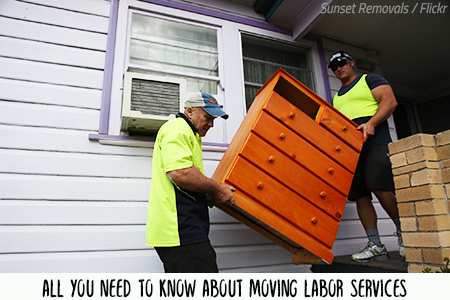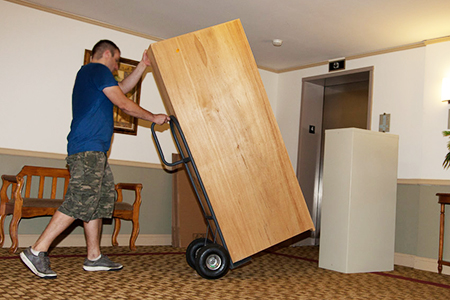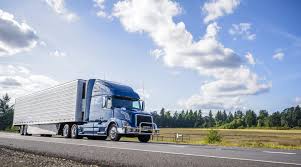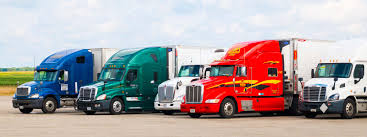Should I Tip Movers?
We can help with anything you need to know about moving your stuff from point A to point B, but we aren’t the ones doing the heavy lifting. Good news, though! We interact with the labor crews who load and unload daily, and they’ve shared some advice.
So, here’s the answer to the question, “Should I tip the movers?” In the moving industry, there’s no expectation to tip, but like anything, when it’s a job well done, it’s always appreciated. Certainly, don’t feel obligated, but it’s a good idea to have cash on-hand to acknowledge a crew that goes above and beyond.
reasons to tip the moving crew
Since tipping isn’t expected (and it’s not built into your moving cost), use these guidelines to help determine whether you should give a gratuity to the movers:
The job was completed faster than expected
They showed professionalism, handling items with extra care
They had to maneuver a lot of large, heavy, bulky or awkward furniture
Your home or apartment had excessive stairs
They skipped a meal because of the timing of the move
How much should you tip movers?
A good guideline for tipping movers is $10 per mover for a half day’s work (4 hours) and $20 per mover for a full day’s work (8 hours). You could tip more if the moving crew had to work around difficult circumstances like bad weather.
Other ways to show your appreciation
If you’re not comfortable handing out cash, there are other ways to say “thanks.”
Snacks and drinks. On moving day, have things like water, energy drinks and snacks on-hand. If you’ve already packed the cooler, borrow one from a neighbor or get a one-time use cooler.
Meals. If they’re working through lunch, consider something easy to grab like pizza, burgers, sub sandwiches or fried chicken.
Set up a break area. Provide a place to take a quick break between heavy loads. Set up a fan or heater (depending on the weather) and let them know they can stop and take a breather there.
Leave positive reviews. Write your positive feedback on consumer review sites to help them get future business. If you’re not sure where to leave a review, you can ask!

PACKING & BOXING
Connect with a member of our team.
In just a few minutes over the phone, a member of our concierge team can determine what you need and design a customized service plan.
Receive your packing supplies.
Boxes, bubble wrap, packing paper, rolls of tape and everything else you need will be shipped to your home prior to your service.
Relax and let your team wrap things up.
The day of your service, the team lead will let you know they’re on the way. Once everyone arrives, they’ll conduct a brief walk-through, take note of any instructions, and then get started.
They are not a basic part of our moving kits, but they can be included if you request them.
Most packing kits include small, medium, and large moving boxes, wardrobe boxes, TV boxes (if needed), and markers to label the boxes. In addition, we send wrapping paper for dishes, Bubble Wrap, and packing tape. The number of these items varies by home

RESIDENTIAL LOADING/UNLOADING
to handle your local home move, you get more than just strength. You also get experience and expertise when it comes to every step of the moving process, from getting an initial quote to loading and unloading the contents of your home.
There’s a set of best practices that Move follows for every move, ensuring that the loading and unloading process is as smooth as possible. Move knows how to wrap, secure, and protect your furniture and appliances to protect them during loading and unloading.
Full-Service Moving: Take all the stress out of your move. Let Move It Now load our truck with all of your belongings and then unload them at your destination. We’ll do all the heavy lifting with the utmost care. To make it easier on you, we can even do all of the packing and unpacking too!
Loading and Unloading for Self-Moves: Maybe you just arrived in town with a full truck, or are moving away from the area but want to drive the truck to your new destination yourself. Move It Now can still meet all of your loading and unloading needs.

How Many Movers Do I Need?
Most people see two moving options. A DIY move and hiring a professional moving company. While that’s essentially true, there’s a lot you can do to put your move somewhere in the middle.
Not happy with the moving estimates you were given? Consider a DIY move and hiring moving labor! Now, the main draw to a DIY move is the possibility of moving on a budget.
Factors to Consider
Although the above table offers a good estimate of how many movers you’re going to need, every move is different and you should keep in mind the things that make your move different before hiring the wrong number of movers.
Size of the move
As seen on the table, this is the main consideration. The number of movers you will need depends on the number of things you need to move. A move for someone with a studio apartment won’t require nearly as many movers or as much time compared to someone with a four-bedroom home.
Labor Needing Done
While the number of things you need to be moved (or the size of your home) will help determine how many movers to hire, some items require special care. When you have heavy items or harder to pack items, you may need more movers to help with the job.

All You Need to Know About Moving Labor Services
Moving labor services fall somewhere between organizing a self-move and hiring full-service movers. In fact, hiring moving labor can easily prove to be a great option for you, especially when you know that you just won’t be able to gather up enough friendly manpower to handle the heavy load of your upcoming move.
What is moving labor?
To best explain what the moving labor service is all about and how moving labor help works, let’s break down the entire home moving process into 4 distinctive relocation stages that are easily recognizable even by people who are moving house for the first time in their lives.
Stage 1: Packing. This is the most extensive period during a house move simply because it includes the job of packing all the household items found inside an apartment or a house. And packing for a move, as you probably already know, is the most time-consuming task in anyone’s moving checklist.
Stage 2: Loading. This is the period when all the packed boxes, wrapped-up furniture (often disassembled beforehand), protected household appliances and other household items will need to be lifted, moved and loaded into a moving vehicle. It’s exactly during this stage when moving labor will be needed the most to prevent Moving day accidents that may lead to various types of property damage and personal injuries.
Stage 3. Transportation. This is the stage when the loaded household items are being physically transported from Point A (current home) to Point B (destination home). Depending on the move distance, this stage can take anywhere from a few hours to a few days, even a week or more in some cases. During a self-move, the transportation vehicle will be either a moving truck rented from a truck rental agency or a pick-up truck borrowed from a friend. When full-service movers are used, the haul of the household items will be done with a moving truck provided by the hired moving company itself.
Stage 4. Unloading. This is the final stage of the house moving process when the items are delivered to the new address. Similar to Stage 2, this period also requires physical efforts and skills to unload the moving truck safely and take all the things inside the new home, all to the way to their destination rooms. Here moving labor becomes essential, again, for the successful completion of the house move.
Now, if you choose to hire a full-service moving company, the professionals will take care of all these 4 stages for you, thus taking the bulk of move-related stress off your shoulders and giving you more free time to take care of other important tasks such as saying goodbye to your friends, for example. Of course, the downside here is that you’ll need to pay more for the all-inclusive moving services.
On the other hand, if you choose to organize a self-move, you’re going to have to take care of all the above-mentioned stages on your own – a task that may prove to be more challenging than you first thought, especially when you know that you won’t be able, for one reason or another, to rely on the assistance of your good friends.


